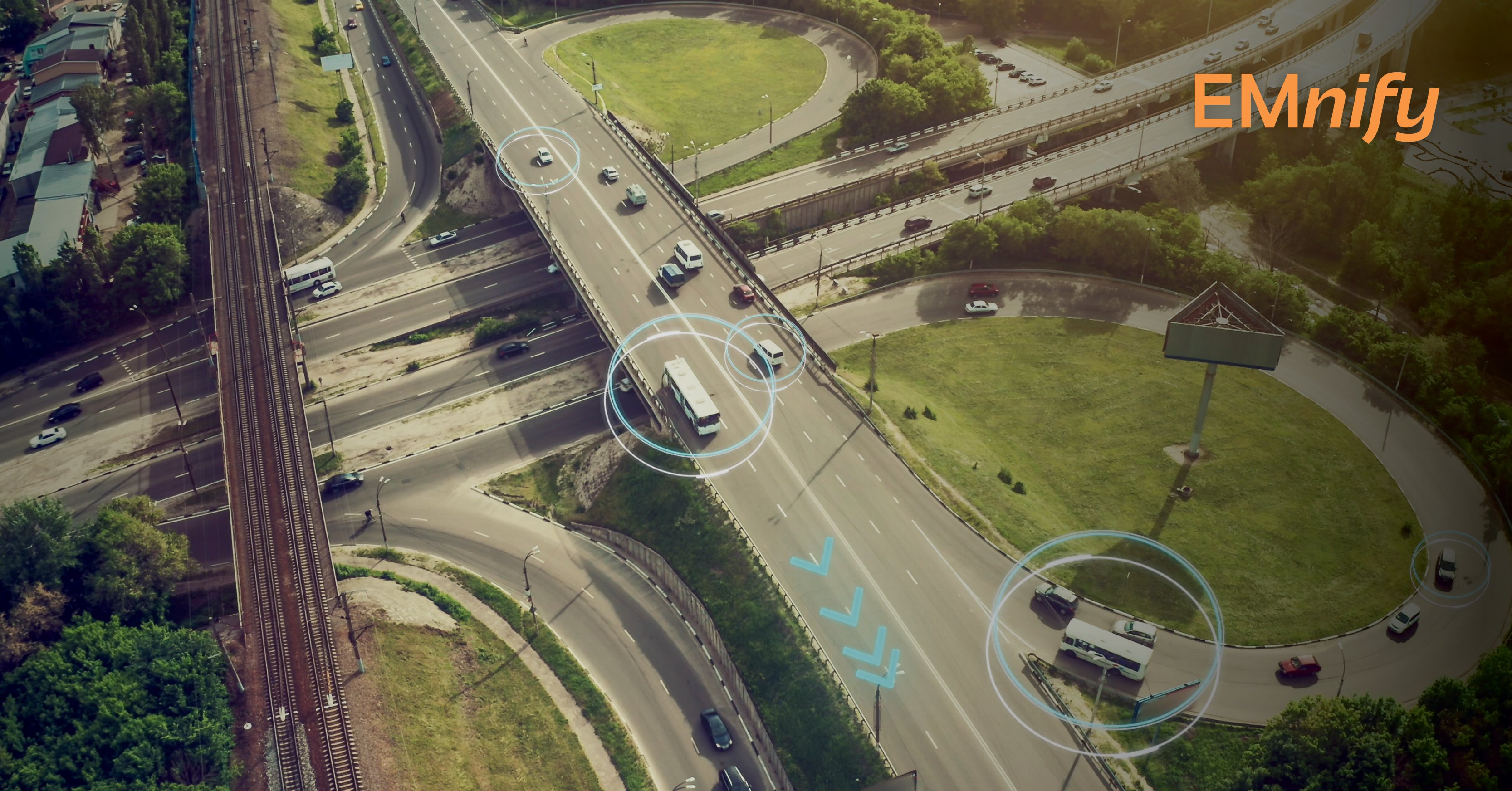

The Internet of things is growing at an exponential rate - it seems that every day there is a new study, report or predictions paper analyzing the growth and potential of the IoT and Machine to Machine technologies.
This year’s (2016) Consumer Electronics Show proved just how much of a focus IoT is for manufacturers and consumers with many news articles referring to 2016 as “The year of IoT”. So, it’s fair to say that IoT now has a foothold in nearly all markets - building and construction, to energy and utilities; retail and consumer, to logistics and transportation.
Transportation and logistics
This is an industry where we have arguably seen the most growth and where internet enabled devices/products are largely now the norm - think GPS or automated emergency calling on impact - and those are just a couple of products end-users/consumers enjoy. Broaden the scope to enterprises or fleet management and we see examples of IoT hugely impacting asset tracking and security, traffic management and usage-based cost allocation.
In this week’s blog we will focus on fleet management and logistics. We will assess the challenges with implementing an efficient asset management system and the best connectivity solution to overcome these.
In the last year (2015) there were more than 36 million light to heavy commercial vehicles on European roads. These vehicles - and the companies that own and dispatch them - are responsible for the delivery of goods all across the continent. The ability to monitor, track and adjust schedules according to changes in travel conditions such as: traffic, road or bridge outages, detours, time delays, or enroute accidents that could potentially affect delivery, becomes imperative for efficient management. It enables fleet managers to access information in real time to make quick, informed decisions to ensure each vehicle is on the road and makes it to its destination on time.
Challenges:
Of course managing a fleet of thousands, or containers aboard various container ships, comes with an array of potential management and connectivity issues, including:
- Mobility - the very nature of tracking and managing assets within the transportation and logistics industry means managers need to have a solution that is completely mobile and able to travel with the assets while staying connected and communicating back to the home servers/platform.
- Lifespan - whatever method is used to connect the fleet, it’s important to ensure it will last throughout the lifecycle of the deployment. The time and money associated with the need to replace the connectivity solution throughout the lifecycle of the deployment has the potential to interrupt delivery schedules, logistics, and revenues.
- Environmental factors - commercial fleets or logistics companies deployments often face extreme environmental conditions, take for example logistics containers that spend weeks at sea. In these conditions, enterprises need to ensure their connectivity solution can withstand such factors so they do not lose contact with assets due to malfunctions in the connectivity solution.
- Multi-national coverage - Fleet or logistics companies often have assets in many different regions and countries. In places like Europe for example, it’s very common for one vehicle to travel through many different countries during a delivery. In this sense, fleet managers need to ensure that they remain connected with vehicles, no matter the country.
To overcome these challenges fleet managers and logistics companies require a robust, globally connected asset tracking system.
Asset tracking
Using a globally connected asset tracking system enables managers to:
- Reroute assets/vehicles at any time to avoid traffic or to a new pick-up/delivery destination - this reduces risk and insurance costs associated with missed service fulfillment.
- Monitor the location and status of their assets at all times - this also optimizes supply chain management by enabling full visibility of the deployment from departure through to its arrival at its final destination.
Status tracking includes monitoring the speed of a vehicle and whether it’s in motion, idling or stopped; it’s also possible to measure the length of stops. Monitoring the length of time a vehicle is stopped for is imperative to ensure proper logging of break times, particularly on long hauls.
Status tracking also extends to fuel tracking. This is particularly essential for logistics and transport enterprises - it enables them to monitor consumption to better estimate and plan for costs as well as monitor for and prevent fuel theft as a result of draining or overfilling.
The connectivity solution you select for enabling an effective asset tracking system for fleet management or logistics tracking will be the difference between overcoming the aforementioned challenges or incurring additional costs and lost assets. Below we will look at each challenge individually and assess how cellular M2M connectivity can help alleviate these issues.
Mobility
For connectivity on a global scale, no matter where your device moves, one of the best recognized solutions - particularly for large-scale deployments - is cellular M2M connectivity:
- Cellular solutions use SIM cards to connect devices - these are either inserted via a SIM slot or embedded into the devices, making them completely mobile and able to travel easily with devices.
- Cellular is a Wide Area Network solution with the ability to connect long-range globally via cell-towers. Of course the strength of connectivity depends on the strength of coverage, as well as the number of towers in the area, however so long as you are within 16 km (9.9 mi) of a tower you will typically have a strong connection.
- Cellular devices can also connect to networks via satellite which further enhances the ability to stay connected in even the most remote areas or while at sea - very important for many logistics container asset tracking ventures.
- It’s also possible to use a LPWAN connection, such as LoRaWAN, in conjunction with a cellular gateway to monitor assets out of cellular/satellite range - keep an eye out in the coming weeks for our ‘how to’ LoRa blog, or contact us today to learn how to use LPWAN connections with cellular gateways.
Comparatively, a popular connectivity method such as Wi-Fi requires your device to remain within 32 meters of the access point/router. This prevents long-range mobility which is essential for fleet management. Similarly, Bluetooth solutions are also short range, requiring your device to be within 10 – 100 meters of the access point, depending on the power-class.
Lifespan
When using a cellular connectivity solution, you have the option of multiple SIM form factors - as well as standard or industrial grade SIMs. See our Form Factor blog for more information on selecting the best SIM for your needs.
In particular, for fleet management and logistics, industrial grade SIMs are a good choice to ensure the SIM lasts throughout the entirety of your devices lifecycle. These SIMs come with a warranty to last 10 years with a possible maximum of 15 years.
For the best lifecycle standard though, you can go one step further than simply using an industrial grade SIM. Embedded SIMs are far superior for fleet management and logistics M2M applications. These have a lifecycle of 10 years at standard and 17 years at industrial grade.
Environmental factors
Continuing to focus on embedded SIMs for fleet management and logistics deployments, embedded SIMs help ensure your device stays connected, despite the risks of extreme environmental factors.
Industrial grade embedded SIMs come vacuum sealed and can be soldered directly onto your device’s circuit board, this helps safeguard against:
- Malfunction due to shocks, corrosion and other environmental factors
- Malfunction due to extreme weather conditions - they are built to withstand temperatures between -40°C and +105°C
- Risk of theft or tampering because the SIM is not directly accessible from the outside of the device
Multi-national coverage
As previously mentioned, most fleet management or logistics asset tracking ventures will involve deployments in multiple regions and countries. The best way to track and monitor these deployments is by using an embedded Universal Integrated Circuit Card (eUICC).
The key reason an eUICC SIM is superior for ensuring multi-national coverage is because of its ability to be provisioned Over-The-Air (OTA). This means you can change your Mobile Network Operator (MNO), or connect to multiple MNOs, using one SIM. Traditional SIMs are provisioned with the provider profile of a single MNO and traditionally, these profiles are locked to the SIM; meaning if you change operators you will need to replace the SIM. eUICC’s are able to host multiple provider profiles and can be programmed to use a specific profile or change profile at any time without the need for physical replacement. This allows you to choose the way you connect to your devices globally, whether you roam with a single provider or connect locally. You can read our eUICC blog for a more in-depth overview of eUICC and its benefits.
Conclusion
We have looked at how a cellular M2M connectivity solution can help fleet management and logistics companies overcome barriers to efficient asset tracking. However, what’s arguably more important than just getting the right connectivity solution is ensuring you have the best connectivity platform to monitor and manage your assets through.
It’s important to have a platform that allows you to interact with and adapt your connective rules and protocols in real time. One that allows you to enable and restrict connectivity based on cost, service provider and location. To ensure you have complete control over your assets you also need to be able to easily integrate your connectivity platform into wider business management programs and tools to help streamline billing and administration tasks.
At emnify we specialize in cellular M2M connectivity for fleet management and logistics, providing a real-time management platform that you can fully integrate into your existing business systems. If you have any questions about connectivity for fleet management or logistics, contact us. Our team is always happy to help and offer advice.
Get in touch with our IoT experts
Discover how emnify can help you grow your business and talk to one of our IoT consultants today!

emnify
The content team of emnify is specialized in all things IoT. Feel free to reach out to us if you have any question.


